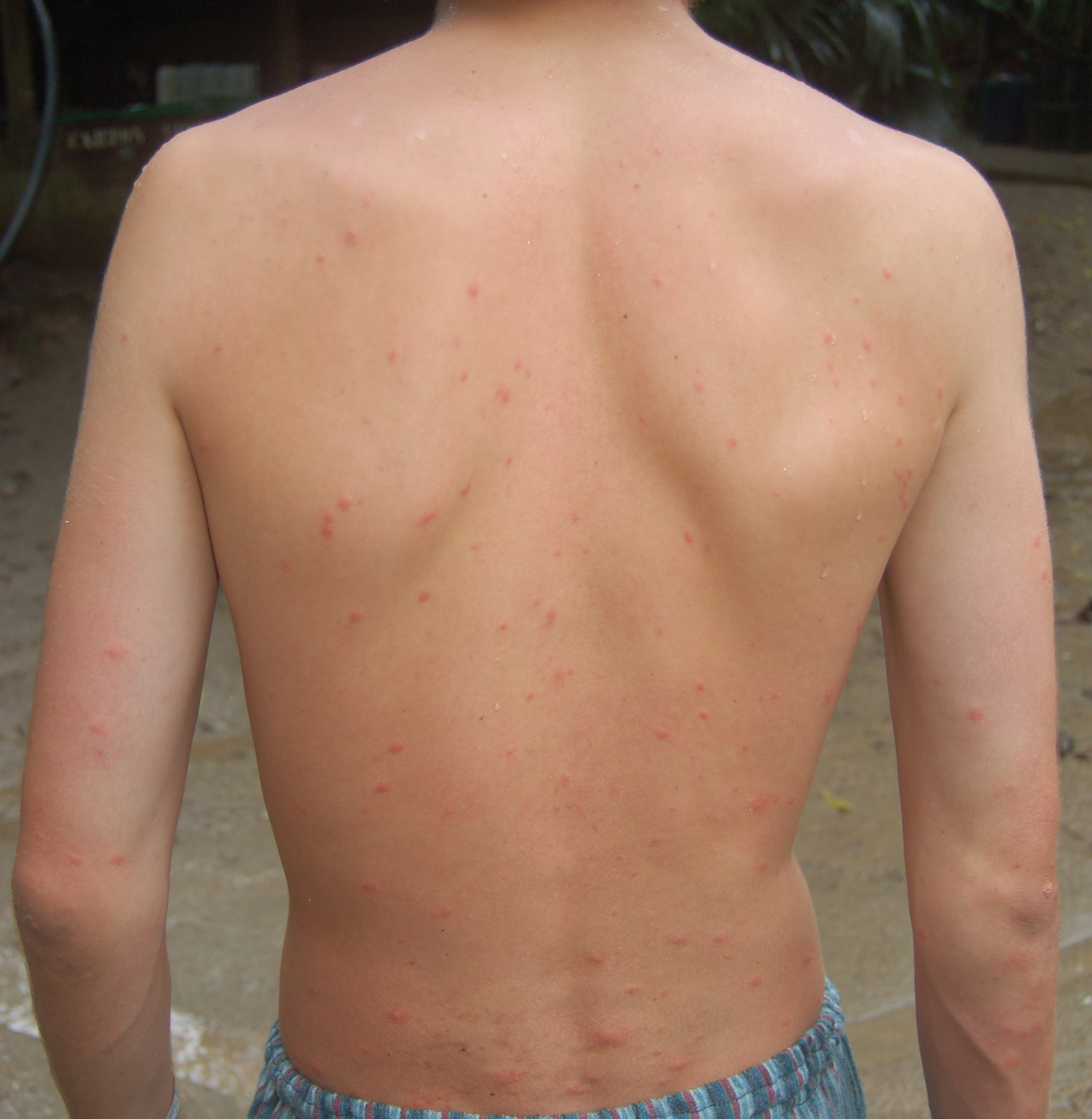
SCP-2350
From the Mind of Malinalxochitl
Connected to: SCP-2810

Effects of SCP-2350 on a test subject after two minutes of exposure.
Special Containment Procedures
A recording of SCP-2350 is stored on a secure USB drive in the Site-42 Digital Armory. This drive should only be handled by deaf personnel or personnel wearing industrial-grade earmuffs and earplugs.
Mobile Task Forces Lambda-12 ("Pest Control") and Upsilon-4 ("Sugar Pill") have been jointly assigned to handle containment of SCP-2350. Upsilon-4 is working to develop an inoculation against SCP-2350's effects, while Lambda-12 investigates potential SCP-2350-1 events occurring in Vietnam. If Lambda-12 locates an area affected by SCP-2350-1, they will determine the radius of the effect and establish a containment perimeter around it. The Foundation will then liaise with the Vietnamese government to establish affected areas as wildlife preserves.
The Foundation is currently attempting to negotiate with the United States of America for the release of certain classified files within their archives; if necessary, political pressure may be placed on the USA to achieve this end.
Description
SCP-2350 is a weaponized memetic agent transmitted by sound that manifests as the idea of a swarm of mosquitoes. Human beings that hear SCP-2350 will perceive this swarm as attacking them, though deaf humans are unaffected. For every twelve seconds that SCP-2350 is audible, the perceived size of the swarm will double. Humans affected by SCP-2350 will suffer from rashes and other inflammatory responses consistent with mosquito bites. Affected humans may also develop symptoms consistent with mosquito-borne diseases such as malaria. In several cases, patients developed a combination of symptoms not associated with any specific disease, but with mosquito-borne diseases in general.

Effects of SCP-2350 on a test subject after two minutes of exposure.
SCP-2350 was developed by the United States as a weapon for area denial and saw extensive use in the Korean and Vietnam Wars. The sound was stored on magnetic tape inside a mortar or bomb shell, which was then launched at a target area; upon landing, the mortar would play SCP-2350 until its power supply died. As merely being near these areas would result in infection by the meme, thousands of Vietnamese civilians were killed or driven from their homes.
SCP-2350-1 refers to a phenomenon affecting sporadic areas of the Vietnamese jungle wherein SCP-2350 is produced without an apparent source. It is suspected that SCP-2350-1 resulted from protracted usage of SCP-2350. Affected areas are entirely devoid of fauna; the native wildlife appear to avoid these areas by instinct, while nonnative animals introduced to the area immediately flee.
Discovery: The Foundation first became aware of SCP-2350 on 30/04/2005, when Mobile Task Force Lambda-12 ("Pest Control") encountered the anomaly in Vietnam while tracking an outbreak of SCP-2810. During the expedition, Lambda-12 arrived at an abandoned settlement affected by SCP-2350-1, whereupon they discovered a mortar intended to transmit SCP-2350 and were infected by it. Lambda-12 were able to flee and report the incident; recordings from the settlement, analysis of footage of the mortar, and cross-referencing of external intelligence led to the official designation of SCP-2350.
History of SCP-2350:
Historical records of the ASCI2 indicate that SCP-2350 is descended from a memetic weapon used by Spain in the Spanish-American War, based on an Aztec prayer to Malinalxochitl3. The efficacy of the Spanish weapon was limited by the primitive state of European memetics: the carrier sound had to be made by a hand-held noisemaker, did not cause any physical effects, and affected both Spanish and Americans. As such, the weapon did not contribute in any meaningful way to the Spanish war effort, and research on the weapon was relinquished to the United States as part of the Treaty of Paris of 1898.
Records collected by Soviet intelligence indicate that the United States attempted to refine the weapon for use in both World Wars by developing an inoculation against the meme for use by Allied forces. The necessary breakthroughs to develop memetic inoculations were not arrived at until 1947; as such, SCP-2350 did not see usage in either world war.
Pentagram4 research records acquired by the Foundation indicate that the first inoculation for the weapon was developed in early 1950, enabling its first deployment via naval shelling at the Battle of Incheon. The weapon would see further use as a tool to deny enemy supply lines and hold major chokepoints during the war. It is suspected that several canisters of the weapon were breached at the Battle of Unsan to cover the retreat of American forces: recovered Chinese records of the battle make repeated reference to large swarms of mosquitoes abruptly materializing at crossing points along the Yalu River and attacking all Chinese forces that attempted to pursue the Americans.
The form of the weapon classified as SCP-2350 was developed by the Special Operations Division of the United States Chemical Corps and deployed en masse during the Vietnam War under the codename Agent Black; in addition to having an increased swarm growth rate, the weapon was able to induce physical injuries in its victims. At some point prior to 1961, SCP-2350-1 began to manifest in Vietnam. The American inoculation was ineffective against this form of SCP-2350, enabling it to attack both communist and anti-communist forces indiscriminately.

USAF planes spray an area of jungle thought to be affected by SCP-2350-1; this picture was part of the records collected from the Pentagram.
The United States attempted to curtail the spread of SCP-2350-1 through their herbicidal warfare campaign Operation RANCH HAND; although this attempt was partially successful, it had the added effect of defoliating huge portions of otherwise unaffected jungle and displacing thousands more Vietnamese civilians. As of 2005, the United States has not acknowledged the existence of SCP-2350 and has repeatedly rebuffed attempts by the Foundation to gain access to its historical anomalous archives through traditional channels.
